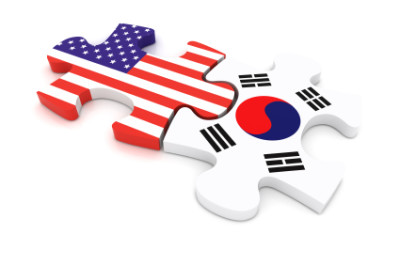Business is booming under the recently enacted U.S.-Korea Free Trade Agreement (UKFTA). One of the many free trade agreements that the U.S. has engaged in recently, the UKFTA went into effect on March 15, 2012. A year after its initiation, trade numbers in certain commodities between South Korea and the U.S. indicate a successful future for this trade pact.
The UKFTA is considered to be one of the most significant free trade agreements the U.S. has entered into in the past 20 years, according to the Office of the U.S. Trade Representative. The UKFTA between the Republic of Korea (South Korea) is also notable as it is the U.S.’s first bilateral trade agreement with a North Asian country and underscores the U.S. commitment to establishing strong trade relationships in the Asia-Pacific region of the world.
The UKFTA addresses tariff reduction and elimination across a range of industries, and includes a strong protection of intellectual property rights. Prior to the enactment of the agreement, the U.S. was already South Korea’s main source of agricultural products. In the year since the agreement came into being, U.S. exports of high-value agricultural products to South Korea reached a record $2.9 billion. The Foreign Agricultural Service states this is a direct result of the reduced and eliminated tariffs of the UKFTA. The main agricultural products exported include fruit, tree nuts, dairy and vegetables. Fruit juice exports dramatically increased by 173 percent, while fresh fruit increased by 42 percent and cheese increased by more than 100 percent
South Korea is ranked fifth in the world in global manufacturing competitiveness, according to the 2013 Global Manufacturing Competitiveness Index. The country is especially strong and internationally renowned for its exports of LCD (liquid crystal displays), memory chips and smart phones. It is a strong competitor in the global automobile manufacturing industry.
Competitiveness in these industries makes for a strong import incentive for U.S. companies, which can take advantage of the UKFTA to import many of these products duty-free or at a greatly reduced rate. Although studies have not yet been performed on imports under the UKFTA, the Office of the U.S. Trade Representative has commissioned a study to examine the effects of the UKFTA on U.S. small and medium-sized businesses including import and export aspects.
Like other free trade agreements, there are strict rules for qualifying a product under the rules of origin, in order to take advantage of the reduced or eliminated tariff. Customs and Border Protection has issued an instructional memo of how to interpret the new free trade agreement, which can be found at:
In addition, the implementing regulations of the UKFTA are located at: http://www.gpo.gov/fdsys/pkg/CFR-2012-title19-vol1/pdf/CFR-2012-title19-vol1-part10-subpartR.pdf, and the new general note to the Harmonized Tariff Schedule of the U.S. related to the UKFTA can be found at: http://www.usitc.gov/publications/docs/tata/hts/bychapter/1201gn.pdf#page=642.

























